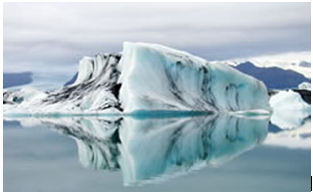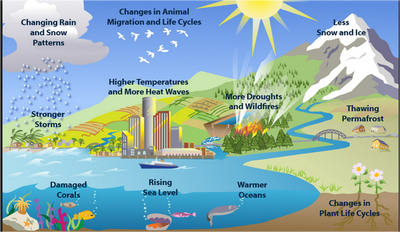Introduction To Climate Change

Climate change has long-since ceased to be a scientific curiosity, and is no longerjust one of many environmental and regulatory concerns. As the United Nations Secretary General has said, it is the major, overriding environmental issue of our time, and the single greatest challenge facing environmental regulators. It is a growing crisis with economic, health and safety, food production, security, and other dimensions.
Shifting weather patterns, for example, threaten food production through increased unpredictability of precipitation, rising sea levels contaminate coastal freshwater reserves and increase the risk of catastrophic flooding, and a warming atmosphere aids the pole-ward spread of pests and diseases once limited to the tropics.
The news to date is bad and getting worse. Ice-loss from glaciers and ice sheets has continued, leading, for example, to the second straight year with an ice-free passage through Canada’s Arctic islands, and accelerating rates of ice-loss from ice sheets in Greenland and Antarctica. Combined with thermal expansion—warm water occupies more volume than cold—the melting of ice sheets and glaciers around the world is contributing to rates and an ultimate extent of sea-level rise that could far outstrip those anticipated in the most recent global scientific assessment.
There is alarming evidence that important tipping points, leading to irreversible changes in major ecosystems and the planetary climate system, may already have been reached or passed. Ecosystems as diverse as the Amazon rainforest and the Arctic tundra, for example, may be approaching thresholds of dramatic change through warming and drying. Mountain glaciers are in alarming retreat and the downstream effects of reduced water supply in the driest months will have repercussions that transcend generations. Climate feedback systems and environmental cumulative effects are building across Earth systems demonstrating behaviours we cannot anticipate.
The potential for runaway greenhouse warming is real and has never been more present. The most dangerous climate changes may still be avoided if we transform our hydrocarbon based energy systems and if we initiate rational and adequately financed adaptation programmes to forestall disasters and migrations at unprecedented scales. The tools are available, but they must be applied immediately and aggressively.
The biggest threat Climate change is everywhere Today we are seeing the impacts of climate change around the globe - melting glaciers, rising sea levels, stronger storms, higher floods, less snow north and more drought south.
While individual events cannot be proof of serious climate change, multiple events, observations in nature, and observations by people living close to nature tell the full story.
The biggest threat of Human beings
Climate change is everywhere
What is climate change?
The Earth’s climate is driven by a continuous flow of energy from the sun. Heat energy from the sun passes through the Earth’s atmosphere and warms the Earth’s surface.
As the temperature increases, the Earth sends heat energy (infrared radiation) back into the atmosphere. Some of this heat is absorbed by gases in the atmosphere, such as carbon dioxide (CO2) , water vapour, methane, nitrous oxide, ozone and halocarbons.
The greenhouse effect
These gases, which are all naturally occurring, act as a blanket, trapping in the heat and preventing it from being reflected too far from the Earth. They keep the Earth's average temperature at about 15°C: warm enough to sustain life for humans, plants and animals. Without these gases, the average temperature would be about -18°C... too cold for most life forms. This natural warming effect is also sometimes called the greenhouse effect.
Carbon dioxide (CO2)
CO2 is the most significant of the gases in our atmosphere which keep the Earth warm. 4 billion years ago its concentration in the atmosphere was much higher than today - 80% compared to today's 0.03%. But most of it was removed through photosynthesis over time. All this carbon dioxide became locked in organisms and then minerals such as oil, coal and petroleum inside the Earth's crust.
The natural carbon dioxide cycle
A natural carbon dioxide cycle keeps the amount of CO2 in our atmosphere in balance. Decaying plants, volcanic eruptions and the respiration of animals release natural CO2 into the atmosphere, where it stays for about 100 years. It is removed again from the atmosphere by photosynthesis in plants and by dissolution in water (for instance in the oceans).
The amount of naturally produced CO2 is almost perfectly balanced by the amount naturally removed.
Even small changes caused by human activities can have a significant impact on this balance.
UNEP Climate Change Presentation - June 2009
UNEP Climate Change Factsheet- July 2010
More About Climate Change Introduction |Science |Tools |Partners






